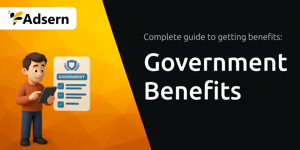
Impulse purchases play a major role in modern consumer behavior, blending emotion and marketing tactics to drive quick decisions. By exploring the underlying mindsets and triggers, we can learn to resist those spontaneous, emotionally driven purchases and build healthier spending habits.
Impulse buying is defined as the act of making unplanned purchases prompted by a sudden and strong desire, rather than thoughtful consideration. This behavior often bypasses conscious decision-making, leading to fleeting short-term financial indulgence that may not align with long-term goals.
Studies show that up to 90% of consumers admit to making impulse buys, accounting for 60–70% of all retail transactions. With the average impulse shopper spending $100–$150 per visit or month, the financial impact can accumulate rapidly if left unchecked.
Research indicates that impulse buying occurs both in-store and online, with 68% happening in-store and 80% online. This shows that digital ease amplifies impulsivity by enabling purchases at any time with little friction.
Emotions such as excitement, boredom, sadness, and stress act as prime catalysts for impulse purchases. Around half of shoppers report feeling a sudden rush of dopamine when they spot an enticing product. This neurologically driven sensation can momentarily eclipse rational thought.
On the cognitive side, impulse buying arises from minimal pre-purchase planning efforts and a diminished ability to weigh future consequences. Unplanned shopping trips are 23% more likely to end in impulse buys compared to well-planned outings. The blend of emotional arousal and low deliberation can spiral into habitual overspending.
Stress-induced spending, often called retail therapy, may offer temporary relief but frequent financial regret. In surveys, 52% of women and 46% of men admit feeling regret after spontaneous purchases, highlighting the emotional toll of unchecked impulses.
Retailers and online platforms create environments engineered to spark intensely heightened sensory experiences. Factors like ambient music, vivid displays, and strategic product placement prime our brain’s reward centers.
By recognizing these overpowering instant emotional reward cues, consumers can adopt a mindful approach and counteract impulsive temptations before they strike.
Online, retailers leverage advanced AI-driven personalized recommendations, countdown timers, and social commerce to instill urgency. Influencers showcasing products tap into our need for social approval, further heightening impulse rates.
Demographic patterns reveal that certain groups are more susceptible to impulsive spending. Millennials lead the pack, with 52% admitting frequent impulse buys. Meanwhile, Gen Z shoppers and urban dwellers report high rates of weekly unplanned purchases.
Single shoppers also outpace married counterparts, making 45% more impulse buys. Interestingly, even individuals living paycheck to paycheck or carrying significant debt continue to indulge in weekly splurges, highlighting the complex emotional drivers that often outweigh financial caution.
Additionally, weekend shopping sprees see spikes in unplanned purchases as consumers browse leisurely. Parents juggling busy schedules may use small splurges as rewards, reflecting intensive situational emotional pressures that drive impulsive behavior.
At the core of impulse buying lies the brain’s reward system. When a tempting product appears, dopamine surges, delivering a brief pleasure spike. This neurochemical response reinforces the desire to repeat the act, setting the stage for habitual behavior.
Over time, the brain forms associations between shopping cues and reward, creating neural pathways that make resisting impulse buys increasingly challenging. Breaking this cycle requires conscious intervention and strategies to dampen those automatic reward loops.
Research in behavioral neuroscience shows that the brain’s basal ganglia encode repetitive behaviors, solidifying habit loops that make spending nearly automatic. Introducing alternative rewards like walking routines or creative outlets can disrupt these cycles.
While the pull of impulse purchases is strong, proactive techniques can help reclaim control over your spending patterns. Below are actionable steps designed to foster mindful decision-making:
By integrating these methods, you can cultivate a more deliberate approach to spending, replacing immediate sensation of consumer satisfaction with lasting financial and emotional health.
Consider automating savings: allocate funds to a separate account before you spend. This pre-commitment savings mechanism barrier reduces the likelihood of impulse buys by limiting available funds.
Leverage technology: use browser extensions or apps that block shopping sites during vulnerable moments or set up real-time budget-limit spending alerts to notify you when you approach predefined thresholds.
Impulse buying is a pervasive phenomenon driven by emotion, environment, and neural reward pathways. Recognizing the patterns and triggers empowers consumers to make thoughtful choices rather than succumbing to fleeting desires.
Adopting mindfulness, structured spending routines, and simple delay tactics can transform spending habits. With consistent practice, each decision becomes an opportunity to align purchases with personal values and long-term objectives, fostering resilience against impulse-driven temptations.
By understanding the psychology behind impulse buying, each of us can transform mindful awareness into practical action and self-trust. Over time, these habits foster financial stability and emotional resilience.
References













